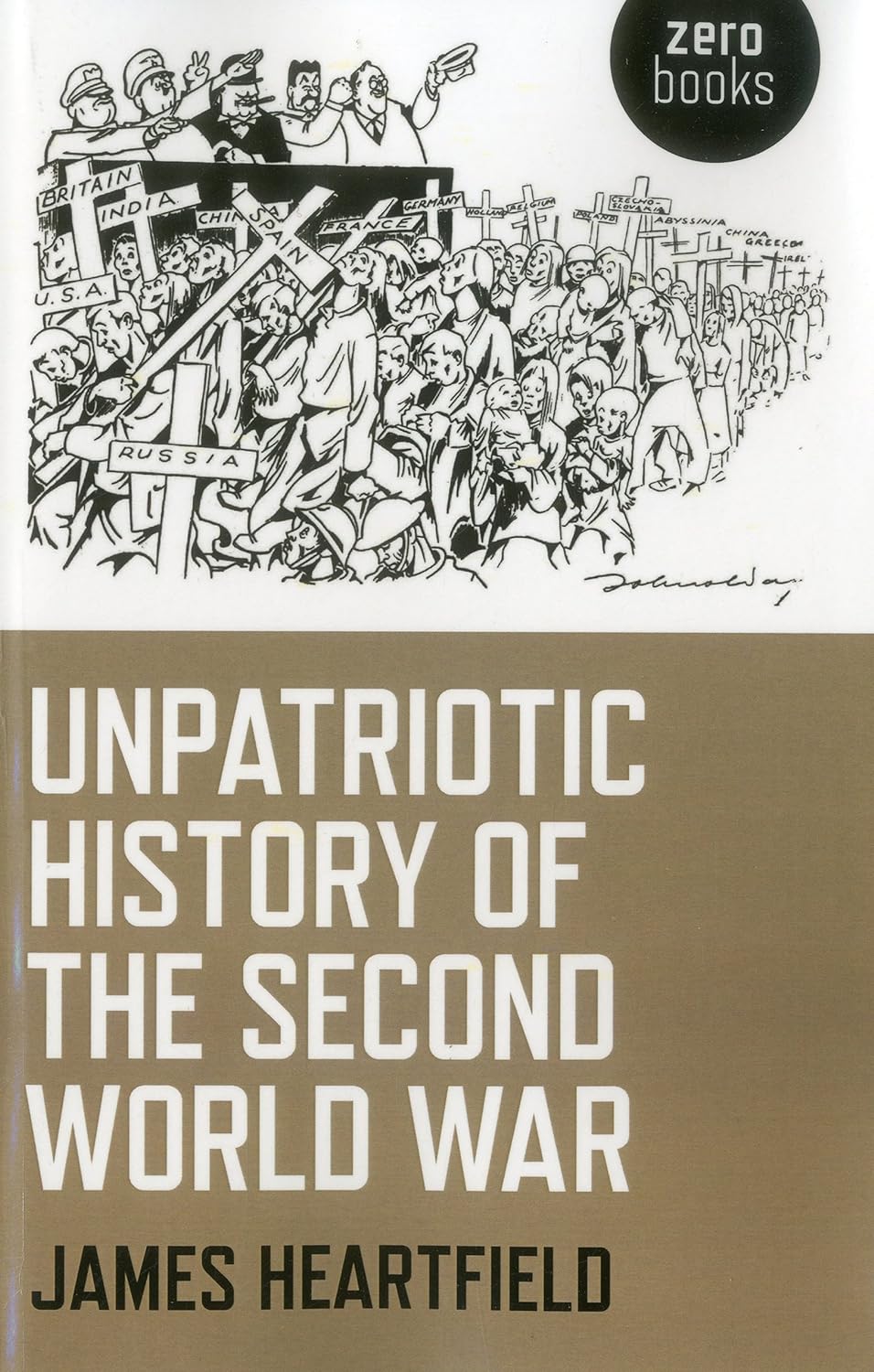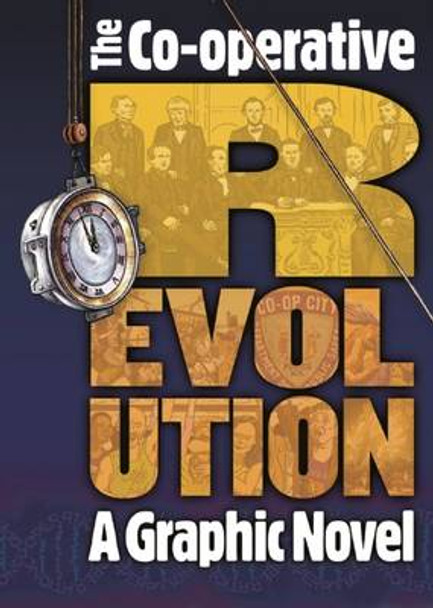Book Reviews: ‘Unpatriotic History of the Second World War’ & ‘The Co-operative Revolution: a Graphic Novel’
Beneath the fog of the People’s War
 Unpatriotic History of the Second World War by James Heartfield. Zero Books (2012). UK £23.99 / US $42.95. ISBN: 978 1 78099 378 2
Unpatriotic History of the Second World War by James Heartfield. Zero Books (2012). UK £23.99 / US $42.95. ISBN: 978 1 78099 378 2
What is it we are asked to ‘remember’ every Armistice Day? ‘Heroism’ of course; ‘sacrifice’ of course; and the inevitable ‘giving’ of lives in a war fought for the cause of ‘peace’ and ‘freedom’. That is the popularly accepted account.
In this reinterpretation of the events surrounding World War Two James Heartfield invites readers to reconsider the accepted victors’ histories of the period. This is not a run-of-the-mill retelling of the official versions produced at the time for popular consumption and reproduced continually ever since as a justification for the carnage. In their place he gives us an unsanitised version of events and an analysis of the fundamental realities behind the conflict that cost sixty million lives and caused almost incalculable destruction of useful constructions (factories, railways, ships, dwellings and other buildings).
It rejects the orthodox accounts of endeavours to liberate Europe, of supposed struggles against evil dictatorships and of battles to end racism. In their place Heartfield amasses a wealth of evidence to demonstrate that the real underlying concerns of the elites who directed the war on both sides related much more to their economic, strategic, and imperial interests. What had formerly been trading wars had by 1939-1945 turned into armed competition over the spoils of exploitation on a world scale. This was a war over markets and access to raw materials as the post-war settlement over spheres of influence made clear.
This was in no way a People’s War. It was a war against people, including, in the words of Arthur Harris the RAF’s chief of Bomber Command, ‘any civilian who produces more than enough to maintain himself.’
What the democracies and the dictatorships had in common was that they had channelled popular aspirations into nationalist and militarist movements. The working-class majority of their populations were successfully persuaded to identify not with class but with country.
Although it does not draw any conclusion regarding the avoidance of future wars, this book is highly recommended as a useful corrective to World War Two history as portrayed on TV and taught in both schools and universities. It makes several of the arguments we ourselves have made even if it does not explicitly draw our conclusion that capitalism and war are inescapably entwined. Only establishing a world of common ownership and production for use will make war a thing of the past.
GT
************************************************************
All Together?
 The Co-operative Revolution: a Graphic Novel. New Internationalist on behalf of The Co-operative Group. £5.99
The Co-operative Revolution: a Graphic Novel. New Internationalist on behalf of The Co-operative Group. £5.99
2012 has been the UN International Year of Co-operatives, marked by a Co-operatives United World Festival in Manchester at the end of October and start of November. This book charts the origin and history of the co-operative movement and its current size and influence. In a rather pointless future section, the Rochdale Aerotech Co-op is shown providing the parachute for a Mars landing. There is also a section that looks at co-operation in nature, e.g. among bees.
The co-operative movement began in Rochdale in 1844, many of its first members being Chartists. According to figures given here, there are now 1.4 million co-operatives in the world, with over 100 million employees and nearly a billion members. In Britain there are over 18,000 organisations in the ‘mutuals sector,’ which includes housing associations and NHS Trusts.
So immediately we come up with a problem that is not addressed here at all: what counts as a co-operative? One definition (adopted by the International Co-operative Alliance in 1995) is ‘an autonomous association of persons united voluntarily to meet their common economic, social and cultural needs and aspirations through a jointly-owned and democratically controlled enterprise’. The notion in practice covers a wide range of entities, from The Co-op (staple of British High Streets) to Barcelona Football Club, Best Western hotels and Ocean Spray soft drinks, in addition to genuine small worker-owned enterprises. These may all have in common that they are supposedly owned and run by their employees and other members, but they differ in many ways and they all have to compete in the capitalist market place. For instance, The Co-op’s posh new headquarters in Manchester has been put on the market on leaseback terms (once finished, the building will be sold and leased back in order to obtain finance to invest in the next stage of the development). And no form of employment under capitalism is voluntary in the terms of the definition above.
Nothing sponsored by the UN can be seen as any kind of threat to the status quo. The Mondragón Co-operative in Spain, usually cited as one of the movement’s success stories, was set up under the Franco dictatorship, despite the oppression suffered in other parts of the Basque Country, so it was hardly any kind of radical undertaking. And, as made clear in the useful timeline at the end of the book, The Co-op contributed to the British military machine in both world wars, such as by making military clothing and even weapons. Furthermore, it supports the Co-operative Party (‘the political arm of the co-operative movement’) and hence the Labour Party.
There is nothing at all wrong with workers getting together without bosses to organise production and distribution. But by no means everything that calls itself a co-op should really be counted as such. And the view taken in the book, that the Rochdale pioneers made a revolution, is, unsurprisingly, not argued for at all.
PB
